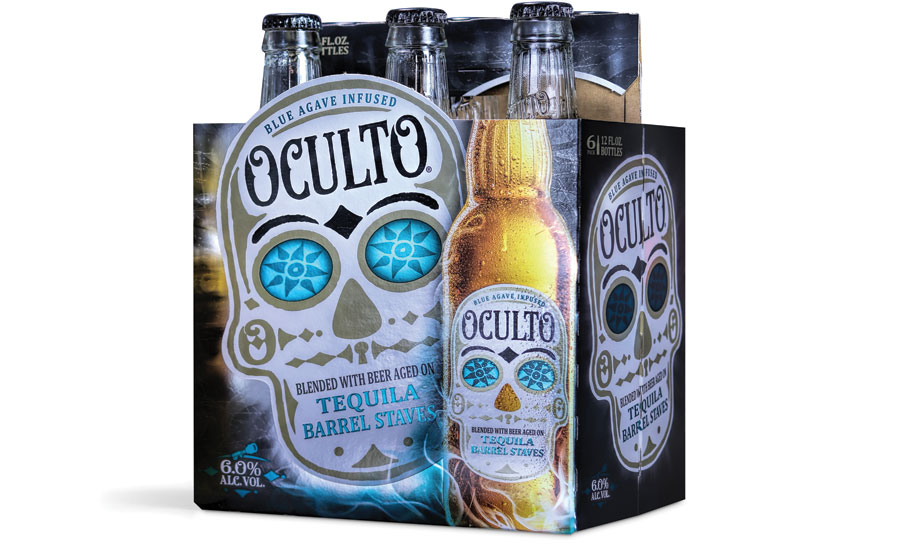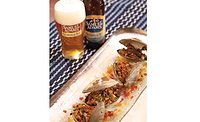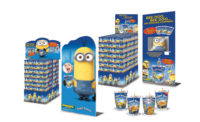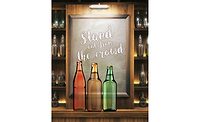Across the beverage market, the craft phenomenon seems to have made an impact. As the craft beer segment grows and more brands enter the market, craft brewers are utilizing secondary packaging as a means to stand out on the shelf and tell their stories, experts say.
The growth in craft beer has resulted in more engaging, premium and graphically appealing secondary packaging, they add. To achieve the high-quality printed graphics brands desire, secondary packaging suppliers continue to innovate and improve their offerings.
With the importance of aesthetics for retail craft packaging, Charles Pavia, director of marketing for Proactive Packaging, Ontario, Calif., notes that having high-quality printing and graphics is important and can be done economically, another crucial factor for the small craft brewer.
“One thing we’re starting to see from inquiries is people are moving toward direct print because they understand that direct print is a very favorable economic model for craft brewers because they’re not producing beer in the number of barrels as an [Anheuser-Busch InBev] or MillerCoors,” he says. “… For a craft beer manufacturer to have a good-looking craft box is really significant because it ties into their overall perspective.”
Alex Green, vice president of consumer packaging for Atlanta-based Georgia-Pacific Corrugated, also notes the importance of having quality printing on secondary packaging for craft brands. He says that the company’s digital printing also offers a solution. “Georgia-Pacific was the first provider in North America to offer digitally printed corrugated at [a] scale that is ideally suited to help craft brewers maximize the potential of their packaging to tell their story,” he says. “As a result, craft brewers can now customize graphics on six-, 12- and 42-pack carriers.
“Georgia-Pacific Corrugated, in alliance with PAX Corrugated, developed a unique digital pre-printed corrugated packaging capability that provides craft brewers with a level of customization and flexibility previously unavailable,” he continues. “This introduction enables craft brewers to create packaging that attracts consumers at point-of-sale with high-quality graphics, low minimum-order quantities, variable images, all while saving on costly printing plates.”
The company recently launched an interactive website, customcolorbox.com, where craft brewers can design and order packaging. The packaging usually arrives seven to 10 days after printing, Green says.
Because of the propensity of craft manufacturers, especially craft brewers, to be transparent, tell the brand’s story and offer unique, more premium products, premiumized secondary packaging is proliferating as it offers a way to reflect and enhance the brand’s identity, experts say.
“Premiumization in packaging is a trend that cannot only elevate a brand, but also its perception amongst consumers,” explains Roxanne McSpadden, senior marketing innovation manager of beverage for Graphic Packaging International, Concord, N.H. “We have found in our research of marketplace trends that many consumers are seeking freshness, newness and variety, and they look at the visual impact when making a purchasing decision.
“In the case of the booming craft beer industry, the following many of these brewers have garnered online is impressive,” she continues. “That powerful storytelling and those preselling efforts really resonate with consumers and get them interested in trying. However, it’s the packaging that closes the deal once they see it in the store.”
McSpadden notes that paperboard cartons can help build a premium appearance and offers opportunity for unique shapes and designs. “Printing and decoration enhancements, such as debossing/embossing, unique coatings for glass and matte appearance, metallic inks and substrates, holographic films and foil stamping are just some of the unique ways [a brand] can enhance [its] on-shelf presence and brand impact with secondary packaging,” she says.
She notes that the company offers several product lines of paperboard solutions. “Our latest innovation is ReShape, a new product line that provides beverage-makers with an ample flexibility to produce the pack formats they run today plus a wide range of other shapes and sizes, even multiples that weren’t possible or common before,” she says.
Additionally, the company offers Tite Pak, an add-on system of features to glass packs that help reduce bottle breakage and eliminate inserts, as well as The Fridge Vendor, the can-dispensing 12-pack fridge box.
Boosting the brand
Secondary packaging offers increased branding opportunities for many categories within the beverage industry, and utilizing the most premium, quality packaging is essential to all of them, experts say.
“It is common knowledge that secondary packaging is no longer confined to protecting products and preventing waste during transit,” Georgia-Pacific’s Green says. “Beverage brands and retailers are increasingly using innovative solutions to speed up the logistics of getting products onto shelves while also attracting consumers at point-of-sale.”
Rick Chlebos, senior director of sales for Chicago-based Coveris echoes similar sentiments. “Secondary packaging is the vehicle that conveys the brand and message at point-of-sale,” he says. “We are stewards of our customers’ brands and take great care in making sure we are delivering on our customers’ brand expectations every day.”
He notes that shrink solutions offer branding opportunities as well, and that Coveris’ shrink secondary packaging offers the ability to cost-effectively shift messaging and modify promotional activity.
However, how a package will be used is an essential aspect to consider when it comes to developing the branding and graphics, Proactive Packaging’s Pavia notes. “What we’re starting to see is [that] you’ve got to understand how the product is positioned and where it fits in [the customer’s] portfolio, because some of the [companies] have ‘good,’ ‘better,’ ‘best,’ lines,” he says. He explains that the design can change for packaging depending on where its distribution will take it.
“[W]e’ve done some packaging for [brands] that are at retail, either in grocery or specialty stores, and then we’ve run some packaging for beverage manufacturers that [was] really meant for on-premise bar sales, so the quality of [on-premise] packaging is dubbed down … it’s not going to look like the packaging at Kroger, because it’s behind the bar.”
Back to basics
Although a core job of secondary packaging has become branding, protection and convenience still are its central role, experts note. According to Coveris’ Chlebos, a beverage-maker needs to consider that secondary packaging must get the product to the market free from damage, appropriately communicate the brand and offer easy transportation of the product.
Coveris, a shrink-wrapping solutions company, offers its Duralite film technology. Chlebos notes that advances in shrink-wrap technology have made it a more stable and durable option. “In 2016, we launched an updated version of Duralite, specific to printed applications, which enhances overall packaged enlongation haze and clarity,” he says. “These new films provide significant savings and improved packaging appearance and functionality for our customers, while affording consumers a more positive experience due to better package integrity and durability.”
Graphic Packaging’s McSpadden also highlights the importance of convenience in secondary packaging. “Convenience translates to products that require easy grab-and-go packaging solutions as well as handles for carrying and dispensing features that make accessing the primary containers easy,” she says.
Georgia-Pacific’s Green adds that several characteristics of the packaging must be considered. “There are numerous characteristics that secondary packaging should meet — but most importantly, safety, quality and efficiency,” he says. “It is also in the best interest of consumers and brand owners that packaging is made easy-to-identify and that information printed on the outside of the container communicates benefits that shoppers may be looking for in a beverage product.” BI






